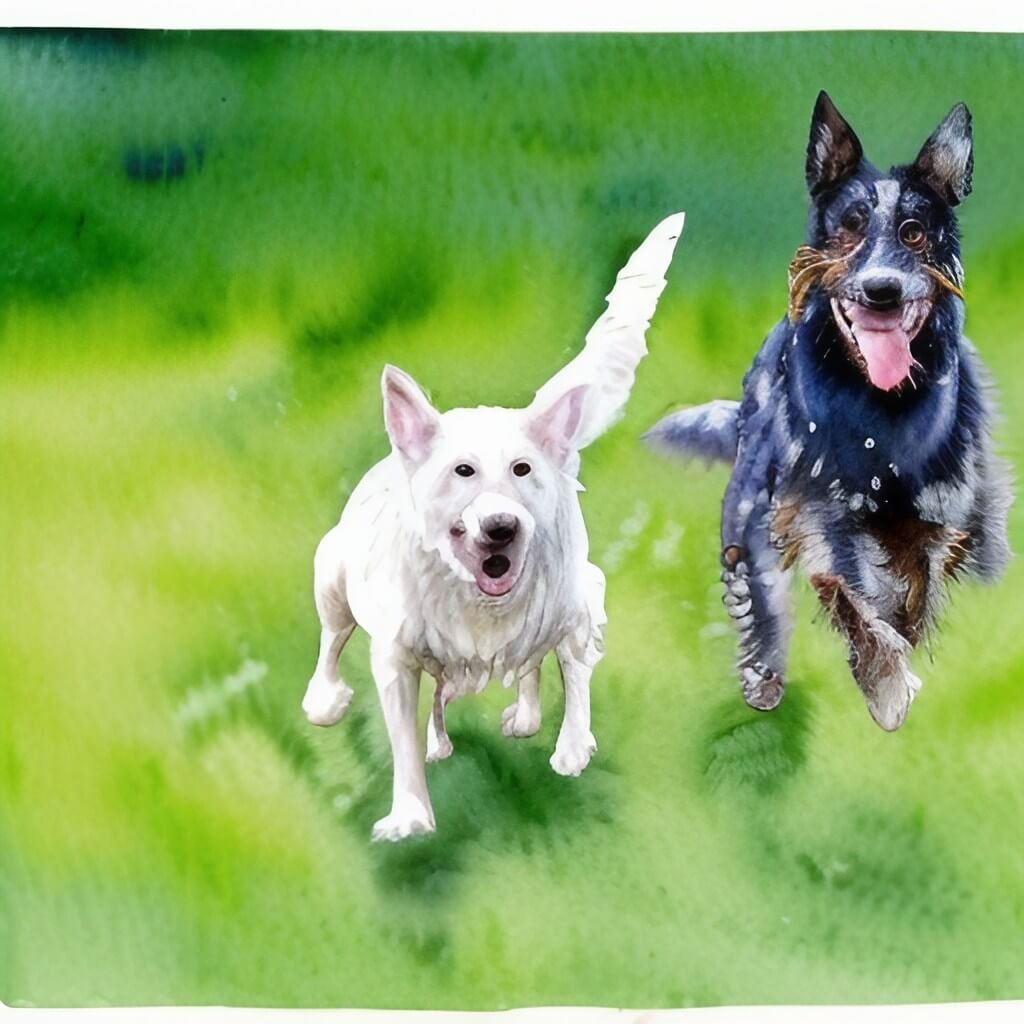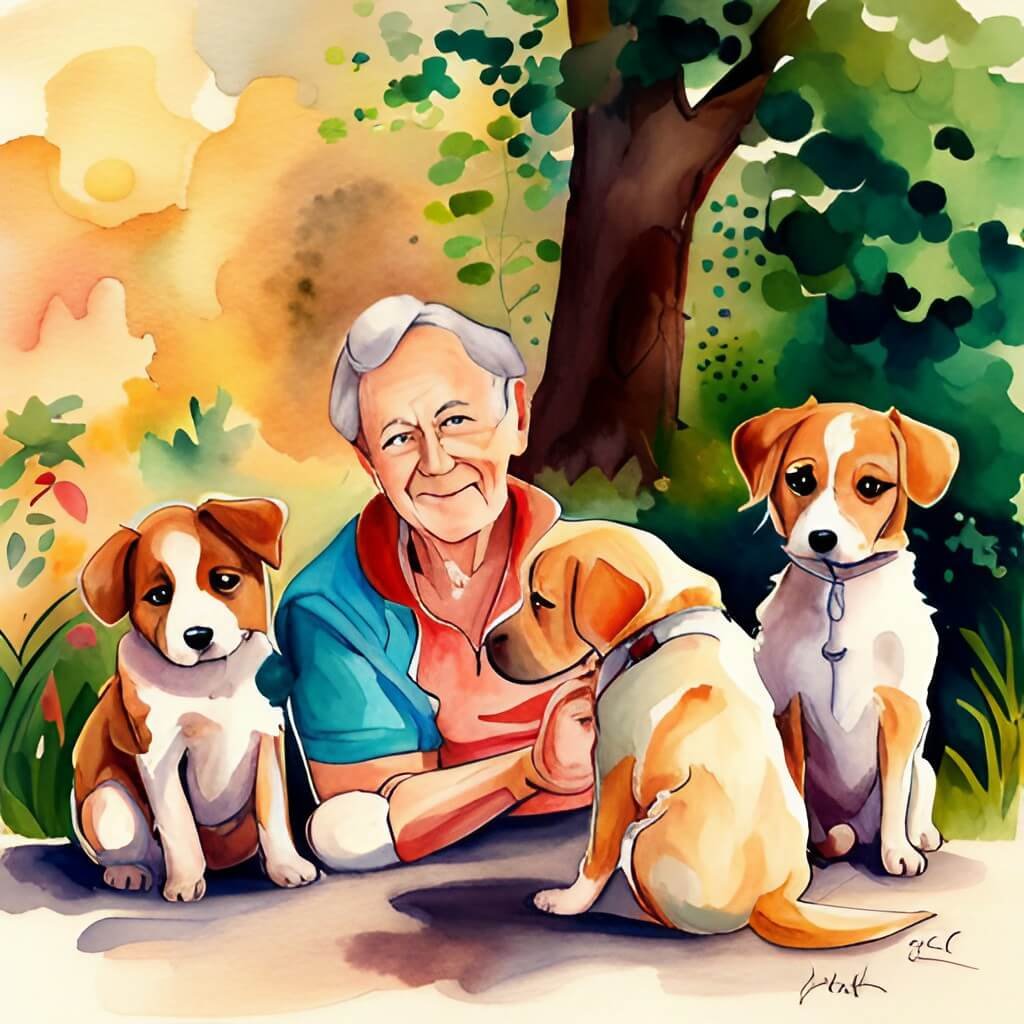Most people are familiar with gun dogs, sled, tracking, trailing and seeing-eye dogs, not to mention bloodhounds and deer, coon and foxhounds – but the coastline has produced an entirely different variety of dog, namely… the surf hound.
Surf hounds are the vagabonds who thrive on California’s beaches despite signs forbidding their presence. In a way, they are symptomatic of the permissiveness and lack of purpose which seems to characterize certain segments of our society.
Nearly all surf hounds are well fed – and some have obviously been fed too well, indicating that they have homes where they enjoy regular meals. Yet they run around unsupervised and in unruly packs, with nothing better to do than play and squabble amongst themselves. It is apparent that their owners don’t care enough about them to keep them under control.
Although their antics are amusing enough to watch – and sometimes even hilarious – surf hounds are a terrible nuisance to beachgoers, since the dogs seem to consider the beach their personal territory. They tear around in noisy pursuit of each other, leaving a sandy wake wherever they go – and heaven help whoever gets in their way.
Of course they are friendly enough on the whole, but that just adds to the problem because they tend to leap all over people in an effort to engage them in their games. Or else they park themselves on beach blankets and lick whatever faces are handy in a show of their appreciation and gregariousness.
Above all, they seem to be immune to all manner of threats to chase them away.
Surf hounds come in all shapes and sizes. Most are mongrels and look like composites of about a dozen different breeds, but many are unmistakably pedigreed. It makes one wonder how the owners of such valuable dogs could let them run around wild, not so much at the beach, but on the streets, where traffic is a constant danger.
Although surf hounds may look scruffy and unkempt, they are generally not dirty, because they often run into the sea to fetch things or to chase each other. Of course the long-haired ones are a pretty sorry sight when they are wet, with the sand sticking to their coats as though they had been sprinkled liberally with salt.
Many of them constantly dig and scratch themselves. It is difficult to tell whether this is because they have fleas or if it is just the salty sea water which makes their skins itch. It is probably a combination of the two.
Some surf hounds are young, sleek, and bouncy, but others are old and fat, and can hardly manage to waddle along behind the rest of the pack. Still, young or old, they all seem to know the favorite picnic spots and the trash cans that yield the juiciest treasures.
Not only are surf hounds vagabonds, they are also thieves. They steal things from people’s blankets – food, toys, sometimes even the blankets themselves. But sometimes they also come bearing gifts – old bones or sticks which they want to have thrown for them to fetch.
Their inexhaustible desire to play and frolic can be quite disarming, especially when they streak through the sand hell-bent – not to reach any particular destination but just for the joy of running.
Of course, in their exuberance, they do not hesitate to bowl over anything that gets in their way: I once observed two strapping, happy-go-lucky boxers strong-arm a bright colored ball away from a little boy.
Naturally, in the scuffle they managed to push him down in the sand, where he sat with the tears streaming down his cheeks, clenching his little fists in frustration, while the boxers pushed his ball out to sea with their paws and noses. It would have been a humorous sight except that the little boy was truly frightened.
The Power Of The Pack
A dog is not nearly so bold on his own as he is when running with a pack; and it is amazing how easily domestic pets revert to being predators when they hunt together. Of course, surf hounds can’t do much damage because their only prey consists of pigeons and seagulls, which they can’t catch anyway unless the birds are injured.
But dogs living in colder climates soon become killers when they encounter game which has been debilitated by the privations of winter. Obviously, they cannot be blamed for this because it is their instinct and, in many cases, also their breeding to pull down game; and it wouldn’t be nearly so bad if these were all dogs hunting to live, but in many cases they are fat family pets which kill for the sake of killing.
A dog hunting alone, unless he is exceptionally powerful and resourceful, doesn’t stand much of a chance of catching up with a deer and then tearing it to pieces; however, in a pack – and these packs seem to be highly organized – the dogs work as a team.
Although I’ve never witnessed an actual killing, I have heard and seen several cases in progress. The big dogs did most of the leg work, while the small ones made most of the noise. Both, I am sure, took part in the final bloodbath.
It was terrible to hear the pitiful screams of their prey but there was nothing I could do because by that time they were beyond help. The corpses were always horribly mutilated but never eaten.
Whenever there is deep snow, covered over with a crust of ice, conditions are especially favorable for dogs because they manage to stay on the surface, whereas a deer’s sharp hooves cut through the ice, which not only slows them down but injures their legs. At such times, the devastation is so great that game wardens may be authorized to shoot dogs caught chasing deer.
This must be a most distasteful duty for them and one which never fails to bring public indignation to a fever pitch. Dog owners simply refuse to believe that their good-natured, pampered pets, who sleep under their beds at night, can be bloodthirsty marauders when they are on the prowl with their companions.
People Are To Blame
Not all dogs that form packs are vagrant pets; some are genuinely wild, or at least homeless. The blame for this can generally be placed squarely on the people who bought them when they were cute, furry pups in pet shop windows, only to abandon them later when they grew big and developed voracious appetites.
It is the same sad story again and again. Families from the city go to the country or the seaside for their summer holidays. Open-air living seems to evoke in them a desire for animal companionship, so they buy a puppy for the kids.
This works well enough until it is time to return to the city. What’s to be done with a now half-grown and exceedingly demanding animal? The people are hesitant about taking it back to a narrow apartment in the city and there is no time to advertise for another owner.
Of course they could take it to an animal shelter – but few people bother to do this. They are afraid of being asked embarrassing questions or having a donation wheedled out of them.
So, with the kids crying and the pup whining, they get into their bulging SUVs and drive away. Now the pup is on his own. He may starve to death or he may be killed on the highway. If he is very lucky, he may be taken in by a kind-hearted neighbor or apprehended by the local dogcatcher.
His only other alternatives are to start scavenging in trash cans or hunting for his food. In either case, he invariably meets up with other waifs like himself and together they form a pack. They are like a small army, with a definite pecking order and no shortage of recruits, either from pups born in the wild or from other dogs abandoned by departing vacationers.
Once, while I was out riding my horse, I suddenly found myself surrounded by one of these packs. It comprised about a dozen dogs of all ages, sizes, and descriptions. They were a truly menacing lot, raising a horrendous racket and snapping at my horse’s feet. It was the only time in my life that I was afraid of dogs.
My horse was soon on the verge of panic. He reared and bucked and there was nothing I could do to pacify him. Finally he lashed out in all directions and I could tell from the dull thud that he had made contact.
One of the yipping mongrels was sent flying through the air. The rough landing stunned him for an instant but then he took off, dragging one leg, his tail between his legs. Luckily the others followed.
It is entirely possible that my imagination has embellished this scene over the years. Perhaps the dogs had only wanted to play; if so, neither my horse nor I had understood their overtures.
Harnessing The Pack Instinct
It is not the dogs’ instinct to hunt and kill that is wrong, but the circumstances under which it may be released. If dogs were truly living in the wild, they would have to hunt for their food just like any other predator. This is the law of nature.
But, as dogs have been domesticated for many thousands of years, countless generations of huntsmen have been able to harness this predatory instinct for their own use. It is a pleasure to watch dogs that have been trained to work for man, especially when they function as a team as do foxhounds or huskies.
Dogs that hunt in a pack are unbelievably brave. They will risk being gored to death by a stag’s antlers or mauled by the giant claws of a bear, and nothing will make them back off except their master’s command. It may be cruel to pursue game with a team of highly trained dogs, but it is nevertheless a sport involving great skill and no small risk to the dogs.
Sled dogs, huskies in particular, present an even more outstanding example of how pack instincts can be put to practical use. Essentially, huskies are as wild as wolves. They wage bloody battles with each other and, if given the opportunity, will not hesitate to kill. But when they are put to work as a team, they perform as harmoniously together as the well-coiled dogs of a very efficient machine.
If such dogs form any attachment at all, it is to one man, and it is for life. They will serve only this master, and no amount of coddling or thrashing will persuade them to accept another. Much of Siberia was charted with the aid of these dogs and there were countless wild-north expeditions in which they played a vital part.
Not Born Free
From California’s surf hounds to Siberia’s huskies may have been a long way to stray, but the problems confronting dog owners are much the same everywhere. Having domesticated and subjugated the dog, man has as a consequence certain obligations toward him.
There can be no question of returning him to Nature because most dogs are not “born free” and have not been for many thousands of years. After all, would a man send his adolescent son out into the world, with a knife and a gun, and tell him to go kill his food or, even worse, let him become so wanton that he kills for his pleasure?
In is no simple task to keep a dog in the city or the suburbs, or even the country for that matter. One can chain him, but that’s a risky business because dogs have been known to strangle themselves with their tethers.
One can keep him in the house and walk him religiously in the morning and at night, but the hours of waiting are boring for the dog and the walking is often inconvenient for the owner. If one is lucky enough to have a large fenced-in yard, one can turn him loose in it, but even then some dogs need additional exercise.
There is no ideal solution and the problem has as many variations as there are dogs and dog owners. But there is no disputing the fact that dogs which are allowed to roam free are a nuisance to everyone and a danger to themselves. This holds true for surf hounds as well as deer stalkers and other footloose canines.
A dog needs more than food, shelter, love and exercise. He needs discipline and a purpose in life, some function which is his daily obligation, even if it is only fetching one’s slippers at night.








